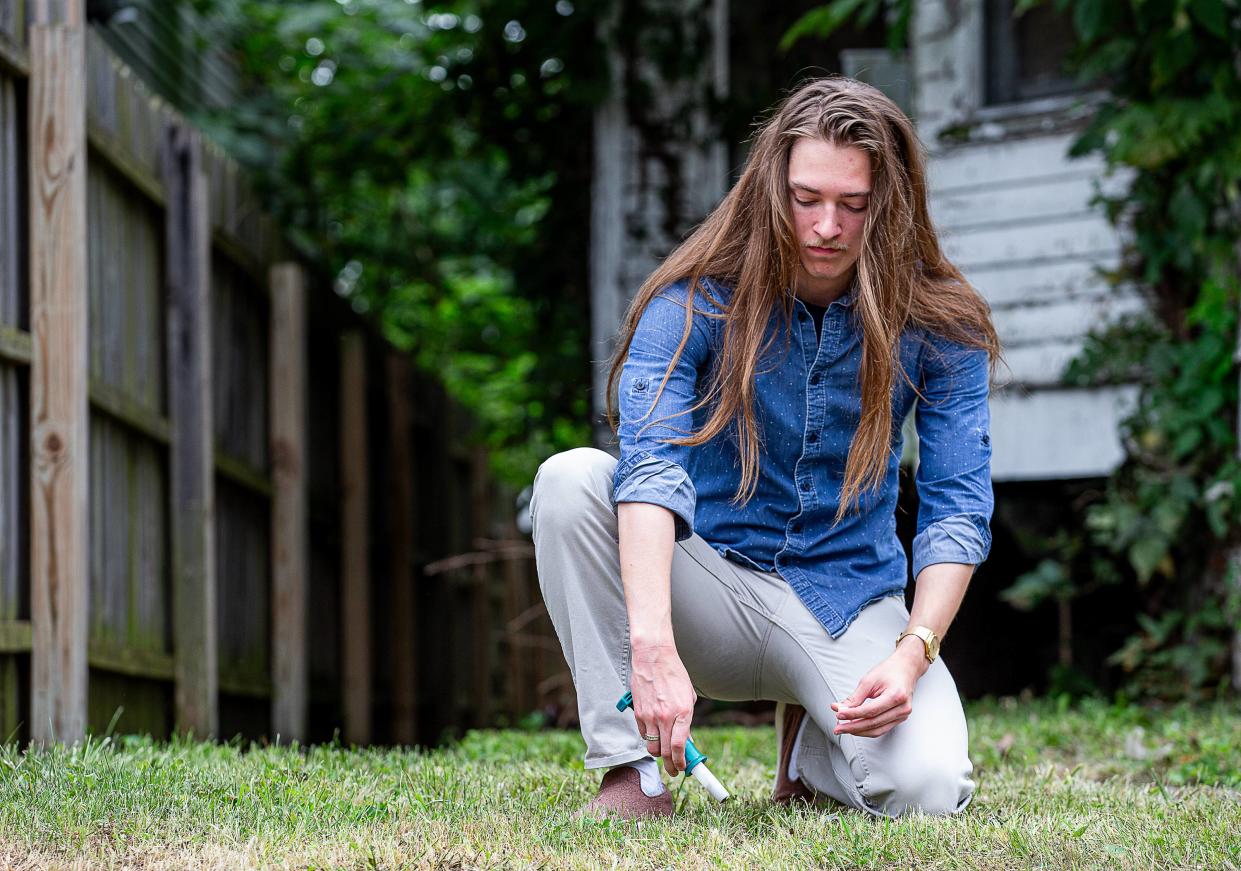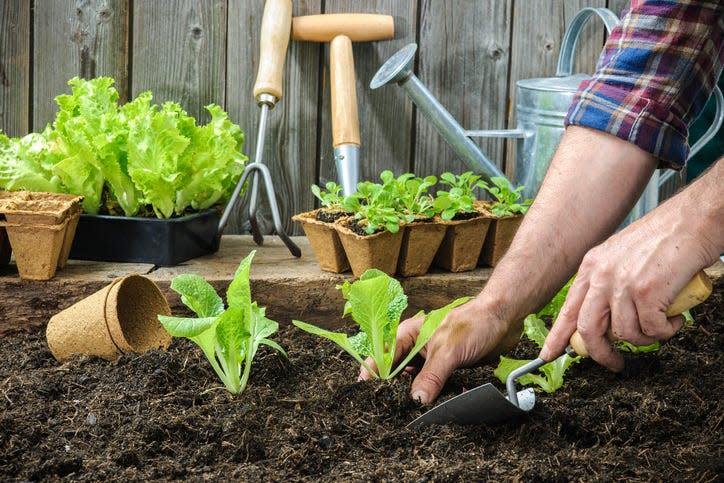Ready to start your spring planting? 5 things to know about your garden soil first
Since it’s just about Kentucky Derby season, that means it’s also peak gardening season. Whether you’re a beginner or a seasoned pro, this is the most common time for dipping a toe in that first veggie garden effort, expanding a perennial bed, or adding new trees to the yard.
But before starting any planting project, it’s best to look at the dirt under your feet.
When my wife and I moved into our Louisville Highlands house 27 years ago, the biggest challenge (aside from the bad plumbing, 1950s-era wiring, and drafty, old windows) was the soil. Other than the multiple layers of dead sod the previous owner left behind, most of the soil seemed better for making clay pots than for growing garden plants.
But after 27 years of spending Thunder Over Louisville and Derby weekends digging, amending, and amending some more, I can finally say I have something that resembles pretty good garden soil. But, let me be the first to say turning clay soil into quality garden soil takes time. They don’t call gardening the slowest of the performing arts for nothing!
So, with that in mind, here are a few tips based on lots of experience with turning bad soil into good.
Should you test your soil?

If your clay soil is anything like what I encountered all those years ago, I can pretty much tell you what your soil test results will say: no nitrogen, tons of calcium (from limestone bedrock), and plenty of potassium and phosphorus. That’s typical for long-ago, agriculturally-abused subsoil left over after construction. But that doesn’t mean you shouldn’t test it. Your county cooperative extension office makes the process easy. And you never know. Your soil could be a nutritional outlier.
How to fix bad surface drainage in your yard

You can spend your whole life amending and amending and amending, but if you have bad surface drainage, all that work is for naught. How can you tell if you have bad surface drainage? Standing water after a rain? Feet still sink even though it hasn’t rained in days? Eroded gullies in that part of the yard? If nothing else, you can stand at the window during a gully washer and see where the water flows.
If your intended new garden spot is one of those problem children, you’ll want to start by correcting the problem. Redirecting gutter downspouts can help, as can building up the area with a truckload or two of good topsoil. In extreme cases, maybe it’s best to consider relocating the “new” garden to higher ground.
Should you add organic matter to your garden soil?
You may have read reports that recommend against amending your planting backfill with organic matter. Well, I’m here to tell you that’s a gigantic load of hogwash wrapped around a conspiracy theory and doused with pure gibberish. Trust me, organic matter is your friend.
To add organic matter to your soil you can follow one of several paths. First, green manure crops are crops grown with the sole purpose of being turned into soil. Growing a season-long green manure crop allows roots to start breaking up the clay soil, and the tops (and roots) turned into the soil at the end of the growing season add organic matter. Traditional green manure crops include alfalfa, oats, and even winter wheat. Those are fine on the garden scale too, but you can use just about anything. Even a few seed packets of zinnias can help and you get some summer flowers as a bonus. The downside of green manure crops is that they take time ― a whole growing season of time. That doesn’t always work for those less patient gardeners among us.
Incorporating composts or other bulk organic materials also helps to break up heavy clay soils. The deeper you can incorporate the organic matter the better for your plants in the long run. I often caution gardeners against over-use of rototillers as they aren’t great for soil structure, but if you’ve ever hand-dug a new garden bed with a spading fork, you’ll understand why from time to time, leaning on the abilities of 20th-century mechanical advances makes good sense.
However you do it, adding organic matter to heavy clay soil will help in the long run and short run. But there are a couple of limitations to keep in mind.
How to add mulch to your garden soil?
Obviously, incorporating compost into your soil by rototilling or hand digging only works well if you’re starting with a blank slate. Digging up all the roots of established trees doesn’t work so well, for the trees, that is. Even the green manure effort has limited utility when trying to add organic matter to areas with mature plantings.
In those cases, your best bet is the longest timeframe approach — mulch. Sure, it doesn’t seem like it would help much but adding a bit of mulch to the soil surface each season and allowing it to break down over time, sends nutrients and organic acids down through the soil profile. As those compounds leach through the soil they can help to alter the macro structure of the soil and improve aeration and drainage over time. Not a quick fix, but it does work.
Finally, there’s the question of added organic matter breaking down after you laboriously incorporate it into the topsoil layers. Yes, no matter what kind of compost or soil conditioner you use to amend your soil, it will at some point be broken down by soil microbes. But just like the above long-term mulching effort, the gradually decomposing organic matter will leave behind a trail of improved soil chemistry and physical features that will make your gardening that much more successful.
Should you add sand to your soil?
No. Adding sand or gravel to heavy clay soil can reduce drainage and aeration. Gypsum and other so-called “soil looseners” just turn your soil into a paste. And any snake oil liquid that claims to magically transform your bad soil to good “with repeated applications," well, I’ll let you ponder that one yourself.
Paul Cappiello is the executive director at Yew Dell Botanical Gardens, 6220 Old Lagrange Road, yewdellgardens.org.
This article originally appeared on Louisville Courier Journal: Ready to start spring planting? What to know about your garden soil
